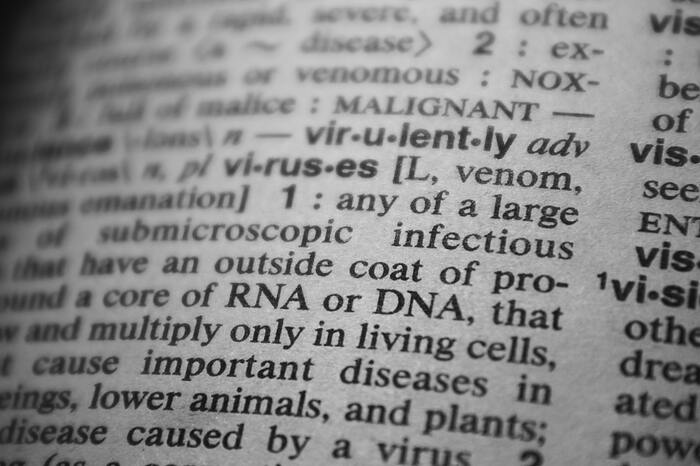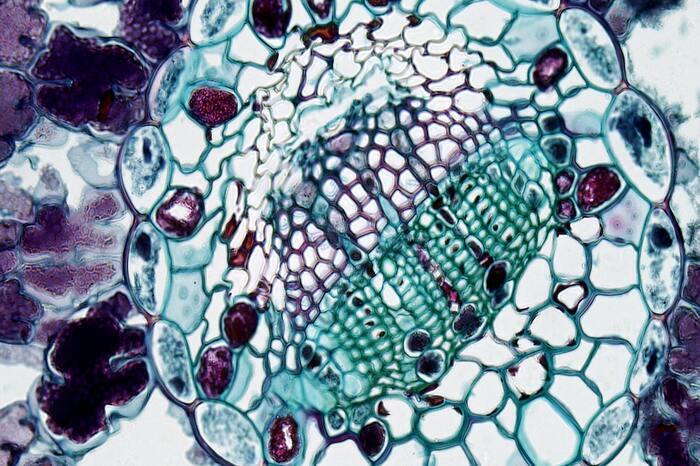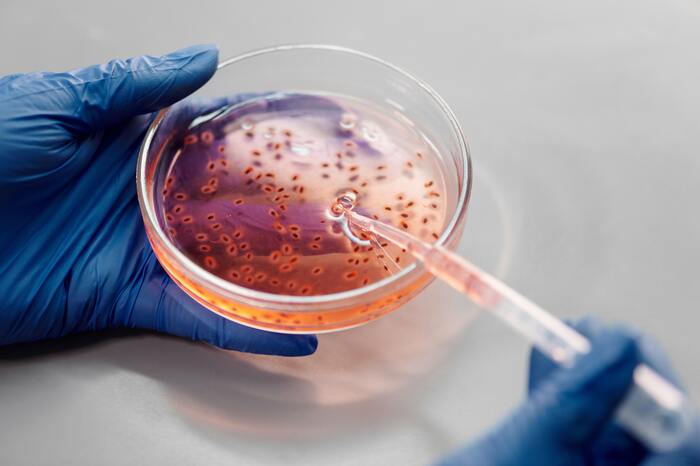
A simplified Introduction to Biochemistry of the Genome
Biochemistry of the Genome leads us to the maintenance, expression, and duplication of the genome and epigenome. You must have seen that some characteristics come into children from their parents. Siblings typically share a similar appearance but are not identical except identical twins. So, how can we simplify this phenomenon? The answer is present in the transmission of traits from one generation to the next and in genetics (the science of heredity).
Due to the sexual nature of human reproduction, a child inherits 50% of its genes from the mother’s egg cell and the other 50% from the father’s sperm cell. In the meiosis process, DNA recombinationproduces sperm and egg. Thus, it is impossible to predict which 50% comes from which parent. As a result, siblings share only a few genes and associated characteristics.
So, let’s understand the Biochemistry of the genome in detail.
Using Microbiology to Discover the Secrets of Life
Until the early twentieth century, scientists did not recognize DNA as the genetic material or the transmission of traits from generation to generation. They dismissed much research until the mid-20th century.
The scientific community incorrectly assumed the inheritance involved a blending of parental traits that resulted in offspring with an intermediate physical appearance. This hypothetical process proved correct because we know about continuous variation, which results from the actions of many genes to determine specific characteristics, such as human height.
The two different outlines of research became the discovery and characterization of DNA, along with the foundations of genetics and the science of heredity. These lines of research began to converge in the 1920s and using microbial systems eventually resulted in significant contributions to clarify the molecular basis of genetics.
Structure and Function of DNA
The nucleotides that compose the DNA are called deoxyribonucleotides. A deoxyribonucleotide is made up of three parts: a five-carbon sugar called deoxyribose, a phosphate group, and a nitrogenous base, which is a nitrogen-containing ring structure responsible for complementary base pairing between nucleic acid strands.
The Discovering of the Double Helix
By the early 1950s, there was well-built evidence that DNA was the genetic material of cells, and the race began to discover its three-dimensional structure. At that time, the Austrian biochemist Erwin Chargaff (1905-2002) looked at the DNA of various species. He found that adenine, thymine, guanine, and cytosine were not present in equal amounts between species but not for individuals of the same species.
He discovered that the amounts of adenine and cytosine were very close to the group of thymine and guanine. We know this relationship as the charge’s rules. In the middle of the 20th century, other scientists were actively working in this field. Hence, the topic of discovering genome, DNA, and RNA is very insightful.
Structure and Function of RNA
RNA is made of ribonucleotides, and it’s a single-stranded one that is connected by a phosphodiester. In the RNA chain, a ribonucleotide contains ribose (the pentose sugar), one of the four nitrogenous bases (A, U, G, and C), and a phosphate group.
The structural difference between the sugar adds stability to DNA. It makes DNA more suitable for genetic information storage. Whereas, for its more short-term functions, RNA makes it further sufficient. Uracil, an RNA-specific pyrimidine, forms a complementary base pair with adenine. It is used instead of thymine in DNA.
However, RNA is single-stranded, so most RNA molecules increase the possibility of extensive intramolecular base pairing between complementary sequences in the RNA strand, resulting in a predictable three-dimensional structure required for their function.
RNA Role as a Hereditary Information
In most cells, RNA does not act as genetic information, but for many viruses that have no DNA, RNA fulfills this role. Thus, it is true that RNA has the additional ability to act as genetic information. Although RNA in cells is typically single-stranded, viruses have a variety of RNA structures.
Single-stranded RNA viruses include the Ebola virus, influenza virus, and rhinoviruses. Which are responsible for the common cold. Double-stranded RNA viruses include retroviruses. Which can cause severe gastroenteritis in children and immunocompromised people. Since eukaryotic cells rarely contain double-stranded RNA, its presence implies a viral infection.
The structure and Function of the Cellular Genome
Thus far, we have individually talked about the structure and function of DNA and RNA. Now, we’ll look at how an organism’s genetic material is organized within the cell, typically known as its genome. It is not surprising that organisms differ based on their DNA and RNA. Since the genetics of the organism influence its characteristics.
Differences between Genotype & Phenotype
The DNA of the cells contains all encoded cellular activities. The sequence of bases within a DNA molecule represents the cell’s genetic information. Genes are segments of DNA molecules that carry the instructional code needed to synthesize various proteins, enzymes, or stable RNA molecules.
The genotype is the complete set of genes within a cell’s genome. However, a cell does not convey all of its genes together. Sometimes, it turns on or off necessary genes according to needs. The set of genes specially expressed at a given time determines the cell’s activities and observable characteristics, known as its phenotype.
The cells of the genotype remain constant, while the phenotype’s cells can change with the changing in environment signals.
Organization of Eukaryotic Chromosome
The structure of chromosomes differs slightly between eukaryotic and prokaryotic cells. Eukaryotic chromosomes are usually linear, and eukaryotic cells have many distinct chromosomes. Many eukaryotic cells are diploid because they contain two copies of each chromosome.
The length of the chromosome is larger than the cell’s length. Therefore, chromosomes need to be packaged into a small space to fit within the cell. For example, if we completely stretched out the human genome’s 3 billion base pairs of DNA, so the total length would be approximately 2 meters. Even some eukaryotic genomes are more sizeable than the human genome.
Organization of Prokaryotic Chromosomes
In bacteria and archaea, chromosomes are usually circular, and a prokaryotic cell usually has only one chromosome within the nucleoid. Prokaryotes are haploid because each chromosome contains only one copy of each gene. DNA super-coiling is required for the genome to fit inside the prokaryotic cell, just like in eukaryotic cells.
The DNA of bacterial chromosomes is organized into various super-coiled domains. Topoisomerases are involved in super-coiling DNA, similar to eukaryotes.
The Extrachromosomal DNA
However, Most DNA exists within the chromosomes of cells. The cell has molecules of DNA outside of chromosomes called extrachromosomal DNA. Which is part of its genome. The genomes of eukaryotic cells include the chromosomes from any organelles that keep these cells alive, such as mitochondria and chloroplasts.
The contents of circular chromosomes in these organelles are evidence of their prokaryotic origins and assist the endosymbiotic theory. See this theory (Foundations of modern cell theory).
Certain DNA viruses’ genomes can maintain independently in host cells during latent viral infection. In these cases, viruses are a type of extrachromosomal DNA. For example, Human papillomavirus (HPV)keeps alive in infected cells in this manner.
What is Non-coding DNA?
A genome contains many non-coding DNA regions that do not encode proteins or stable RNA products. You will frequently find non-coding DNA in the intergenic and gene zone before the beginning of coding sequences. However, procaryotic always use their genomes efficiently, with only an average of 12% of the genome taken up by the non-coding sequences.
Non-coding DNA can make up as much as 98% of the genome in eukaryotes such as humans. Although the percentage varies depending on the species. These non-coding DNA regions were called junk DNA, although this terminology is no longer widely used because scientists have discovered roles in some of these regions.
Many of these contribute to transcription or translation with the mixture of small non-coding RNA molecules, DNA packaging, and chromosomal stability. Even though scientists might not truly understand the functions of all DNA’s non-coding regions. Most people agree that they have a purpose inside the cell.
The Viral Genomes
The structure of viral genomes differs widely. Some viruses have DNA-based genomes as their genetic material. This DNA is single-stranded and double-stranded, like human parvoviruses, herpesviruses, or poxviruses.
Although DNA serves as genetic material for cellular life, some viral genomes consist of single-stranded or double-stranded RNA molecules, as we have discussed already.
Viral genomes are more minor than bacterial genomes because they depend on their host to perform the necessary functions for replication.
Conclusion
Biochemistry of the genome plays a significant role in understanding genome duplication, maintenance, and arrangement.
The foundation of modern cell theory shows the evidence that the genomes of eukaryotic cells get the chromosomes from the organelles that keep these cells alive, such as mitochondria and chloroplasts. In the viral genome discussion, we shared that some viral genomes contain single-stranded or double-stranded RNA molecules, and some have DNA-based genomes as their genetic material. However, the viral genome depends on its host because the host controls the replication function.
You can find more information about the variety of viral genome structures and the deep core of microbiology in the Openstax’s Microbiology by Nina Parker. If you are looking for practice exams in microbiology, we highly suggest obtaining the Openstax Microbiology test bank.






